EXPLAINED: Everything to know about Tasmania’s state budget
From a new digital health system to a sexual violence action plan and millions pledged for roads and tourism, see what funding will be announced in this year’s state budget. FULL LIST >>
Tasmania
Don't miss out on the headlines from Tasmania. Followed categories will be added to My News.
TREASURER Michael Ferguson will juggle rising debt, inflation and interest rates along with growing public sector wage demands as he hands down his first budget on Thursday.
Mr Ferguson will reveal how the government will spend around $8.5bln over the coming financial year— although many of the major initiatives have already been revealed.
Premier Jeremy Rockliff on Wednesday spruiked the government’s allocation of $475m for information technology upgrades to propel Tasmania to the front of the nation’s digital health systems.
“It is a game changer for our health system in Tasmania, it will deliver better patient care, reduced paperwork, and will lead the country in terms of an integrated system across our entire health system,” he said.
“Hospitals, GPS, and community health providers can only work together effectively as a health system if they are connected as one network.”
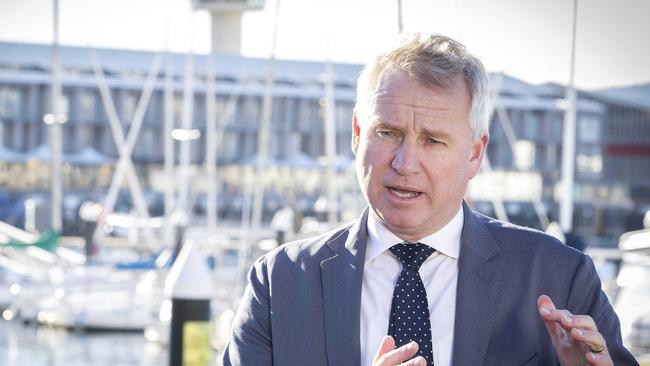
Last year’s state budget and the Revised Estimates Report projected that, all other things being equal, the deficit would be somewhere around $80m to $90m, and the state on track to be $2.5bln in debt.
The budget will include an additional $12.5m to fund the government’s Third Family and Sexual Violence Action Plan Minister for the Prevention of Family Violence Jacquie Petrusma told Parliament on Wednesday.
“We want to strengthen service delivery to ensure that Tasmanians who experience family and sexual violence have access to specialist support services that meet their needs and circumstances,” she told Parliament.
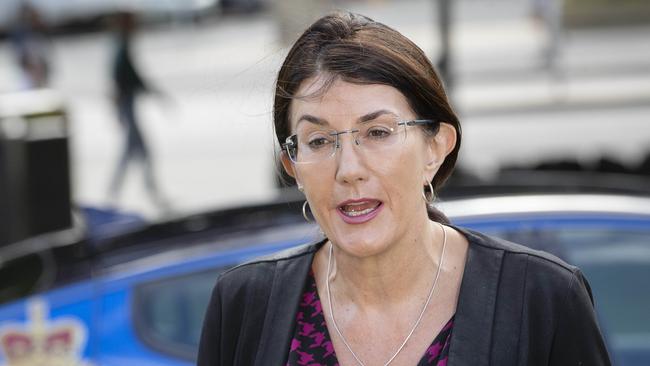
The money will be used to fund the first year of the $75m five year Action Plan, with some of the funding to go to Engender Equality, Huon Domestic Violence Service, RAIN, Safe Choices, Yemaya, the Sexual Assault Support Service, Laurel House, the Australian Childhood Foundation and the Family Violence Counselling and Support Service.
The government has also pledged $26.1m over four years to put Safeguarding Officers in every public school.
Premier Rockliff this week announced $36.4m in extra funding to support the work of the Commission of Inquiry and across the child protection system including $24m to support children and young people impacted by trauma, $2.4m for more workers for the Advice and Referral Line and Child Safety Services and $40 million for new youth justice facilities following the closure of the Ashley Youth Detention Centre.
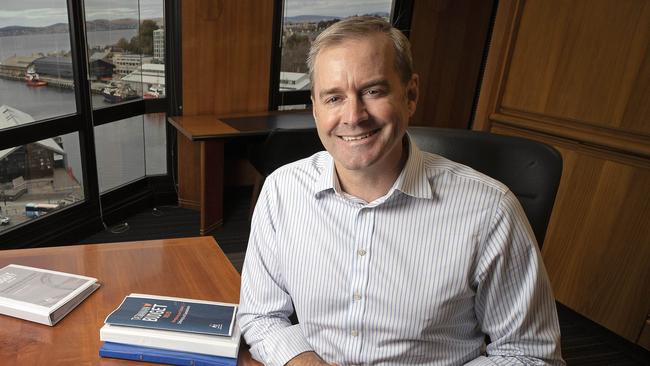
Mr Ferguson, who is also the Transport and Infrastructure Minister has also promised $2.7bln across four years for roads and bridges — a recurring theme of budgets past.
The money includes cash for the Midland Highway Action Plan, the southeast Traffic Solution between Sorell and Hobart, the Sideling section of the Tasman Highway between Scottsdale and Launceston; and the Bass Highway between Launceston and Marrawah.
And construction will begin on the $786m Bridgewater Bridge.
The government has also announced an additional $10 million into Tourism Tasmania across the next four years, to accelerate the industry’s recovery from COVID-19, to expand marketing into key domestic markets, and support direct airline capacity into Hobart and Launceston.
Labor’s Treasury spokesman Shane Broad said the government needed to ensure it took strong action on measures to reduce the cost of living for ordinary Tasmanians.
”Frontline workers in Tasmania, including nurses, teachers and firefighters, are paid significantly less than their mainland counterparts,” he said.
”With prices rising much faster than wages in Tasmania, workers and families are going ackwards at a record rate.
What to expect from Rockliff’s first state budget
NEXT week’s state budget will be focused on delivering infrastructure and jobs and improved services in health, education, public safety and housing, Premier Jeremy Rockliff says.
The first budget of the Rockliff-Ferguson government will be handed down on Thursday amid a series of challenges including the lingering effects of the pandemic, rising interest rates, increasing inflation, and looming cuts to the state’s GST revenue share.
Mr Rockliff said the budget would be would be aimed toward continuing strong economic growth, but gave no hint whether a rare surplus might lie within the four-year forward estimates.
“What is important is that we maintain a strong economy, and very clearly we will be demonstrating where we’ve got across the forward estimates very strong infrastructure investments, maintain that momentum of the economy, maintaining of course our jobs growth as well,” he said.
“We have course since 2014, seen an increase in job numbers of some 27,000 people, which is good and want to maintain that momentum.
“But also very important alongside a strong economy is delivering the services that people justifiably deserve across those important areas of health, education, public safety, and housing as well.
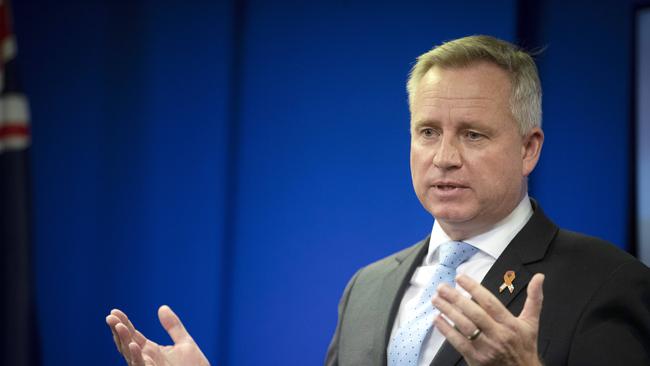
“We never shy away from the challenges and we’re challenging global environment at the moment.”
Rising interest rates, increasing inflation and cuts to the GST are looming as major challenges to the state budget bottom line in the medium term.
Treasury estimates of expenditure growth in the budget are based on a 2.3 per cent overall growth rate until 2024/25 — now well under the rate of inflation.
And the state government spends almost half the budget — an estimated $3.2bln in 2022/23 on employee entitlements.
The government will face pressure to increase public sector wages as inflation increases. Every one per cent increase will add more than $30m million to the budget bottom line.
Last year’s state budget lists an estimate of $105m in annual borrowing costs next financial year, increasing to $114m in 2024/25 — plus around $300m for the cost of servicing unfunded public superannuation scheme liabilities even while interest rates are at historic lows.
Treasurer Michael Ferguson said he was burning the midnight oil putting the finishing touches on the budget.
“I’m genuinely throwing myself to the task of doing a good job and being thorough and making sure that it’s a quality product,” he said.
“But importantly, as well, you know, our message around our management of the finances is that we have the lowest general government sector net debt in the country, of all the states and we need to obviously observe that, keep a close eye on it.
“But it’s a product of the pandemic and the hit that we took to the balance sheet so that we can support families and businesses.”
All roads (and bridges) lead to a State Budget
ROADS and bridges will again be a centrepiece of the Tasmanian budget with Treasurer Michael Ferguson spruiking another major infrastructure spend.
Next week’s state budget will include a record $2.7b for road transport infrastructure across the four financial years of the forward estimates, Mr Ferguson said.
In addition to the $786m Bridgewater Bridge — which is being co-funded with the federal * government — the spending includes:
- the continuation of the $565 million Midland Highway Action Plan;
- the $350 million South-East Traffic Solution between Sorell and Hobart;
- the $120 million project to improve the Sideling section of the Tasman Highway between Scottsdale and Launceston; and
- $280 million in works on the Bass Highway between Launceston and Marrawah.
“The co-funding represents an unprecedented investment in Tasmania’s road and bridge infrastructure following a record $317 million investment in 2020-21 and a new record spend to be out the door in the current financial year,” Mr Ferguson said.
“The Liberal Government’s expenditure in 2020-21 alone was 245 per cent more than the last full year of the former Labor-Green Government just eight years before.
Mr Ferguson said that construction would begin on the largest transport infrastructure project in Tasmanian history – the $786 million new Bridgewater Bridge – early in the new financial year.
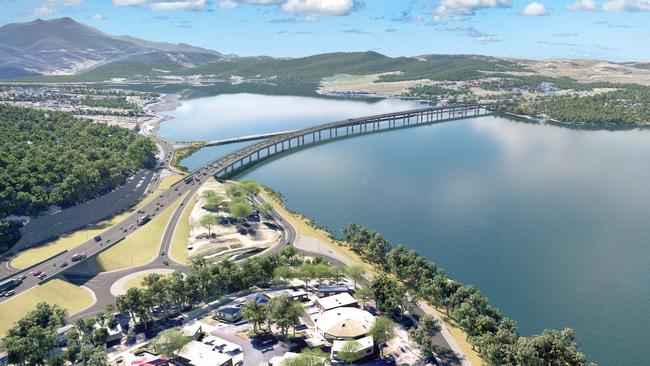
“It will be delivered over the next three years providing a new four-lane bridge built downstream of the existing Bridgewater Bridge.
“The new crossing will reduce congestion and reduce travel times for more than 22,000 people that use it every day.”
The bridge is scheduled to open to traffic in 2024.
On Monday, federal Labor pledged $540m to upgrade Tasmania’s key road corridors, including the Bass Highway, the Tasman Highway and the East and West Tamar Highways, if the party wins government on Saturday.
Shadow Minister for Infrastructure, Transport and Regional Development Catherine King
said Labor would work closely with the state government and local communities to address key projects and priorities such as the Bass Highway from Launceston to Latrobe, Sideling Stage 2, West Tamar Highway from Sidmouth to Legana and the Great Eastern Drive from Orford to Bicheno.
“Labor will work in partnership with State and local government to deliver these commitments, and we will ensure we consider Hobart’s congestion needs in our overall approach to road funding in Tasmania,” she said.
“Good roads are the lifeblood of communities across Tasmania – and improving safety and travel time is really important for local families and the economy.
“Labor will upgrade key road corridors across the state, getting locals home more safely and more quickly.”



